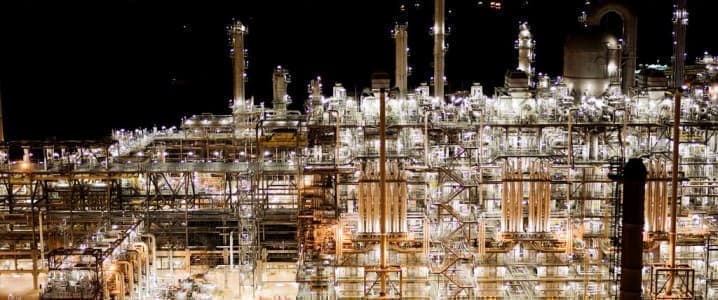While the U.S. shale production decline is the immediate outcome of the price collapse, low crude oil prices have triggered a chain of events in the energy markets that will inevitably impact the supply chain of the petrochemicals industry, analysts say.
There could be trouble brewing in the petrochemicals supply chain because of the oil price collapse, IHS Markit said in a recent analysis.
The lower U.S. oil production will lead to lower associated natural gas production from oil-directed wells, resulting in monthly declines in U.S. natural gas production through the rest of the year, according to experts and the Energy Information Administration (EIA).
Then the decline in U.S. natural gas production will also hit the production of natural gas liquids (NGLs) — ethane, propane, butanes, and natural gasoline – which are used as feedstocks for the petrochemicals sector or burned for heating and cooking. Ethane and propane, for example, are key feedstocks for petrochemicals used for producing compounds to manufacture plastics and resins.
In lockstep with the shale gas boom in recent years, U.S. field production of NGLs has surged to record highs of more than 5 million barrels per day (bpd), as per EIA data.
Over the past two years, NGLs production jumped by 27 percent between 2017 and 2019, said Veeral Mehta, director on the Midstream Oil and Natural Gas Liquids (NGL) group at IHS Markit.
Just three months ago, analysts expected that America’s NGLs production would continue to grow this year and next. Expanding pipeline NGL capacity and growth in oil-directed drilling were set to push U.S. production of NGLs higher in 2020, analysts told NGI’s Shale Daily in December 2019.
Before the coronacrisis, IHS Markit expected that U.S. NGL production would continue its strong growth from the past two years and rise almost 19 percent by 2021.
However, the coronavirus pandemic triggered the oil price crash and the OPEC+ family drama, the result of which is WTI Crude at $20 per barrel and lower oil and natural gas production in the U.S.
Premium: U.S. Oil Production Has Already Peaked
And now IHS Markit expects total U.S. NGLs production to be more or less flat over the next two years.
“However, given that US and (especially) global demand for NGLs is still forecast to grow in the next two years, this US NGL "reset" could spell trouble for the petrochemical supply chain,” IHS Markit’s Mehta wrote last week.
In its latest Short-Term Energy Outlook (STEO) for April, the EIA sees natural gas plant liquids production in the U.S. dropping from 5.12 million bpd in Q1 2020 to 4.73 million bpd in Q1 2021, before starting to grow after the first quarter of 2021.
According to energy data analytics company Enverus, U.S. NGLs production is set to decline over the next year amid expectations of low oil prices.
Energy consultancy Wood Mackenzie says that NGLs supply is the second key energy-linked feedstock after refinery supplies. Short-term NGLs supply is more robust than refinery supplies, WoodMac analysts said in an opinion piece at the beginning of April.
Short-term NGLs supply may be more robust, but the capital expenditure (capex) cuts in North America’s upstream sector “will directly affect petrochemical buyers in the medium term. Assets with the most feedstock flexibility will be best positioned,” Wood Mackenzie said.
“Frozen economic activity and volatile feedstock pricing will both have an immediate and dramatic impact” on the petrochemicals sector, the analysts noted.
All these projections show that the dramatic events in the oil market over the past two months will affect every corner of the global energy industry.
By Tsvetana Paraskova for Oilprice.com
More Top Reads From Oilprice.com:
- Texas Oil Drillers Can’t Agree On Output Cuts
- Gazprom CEO: Oil Could Hit $45 This Year
- The Sad Truth About The OPEC+ Production Cut


















